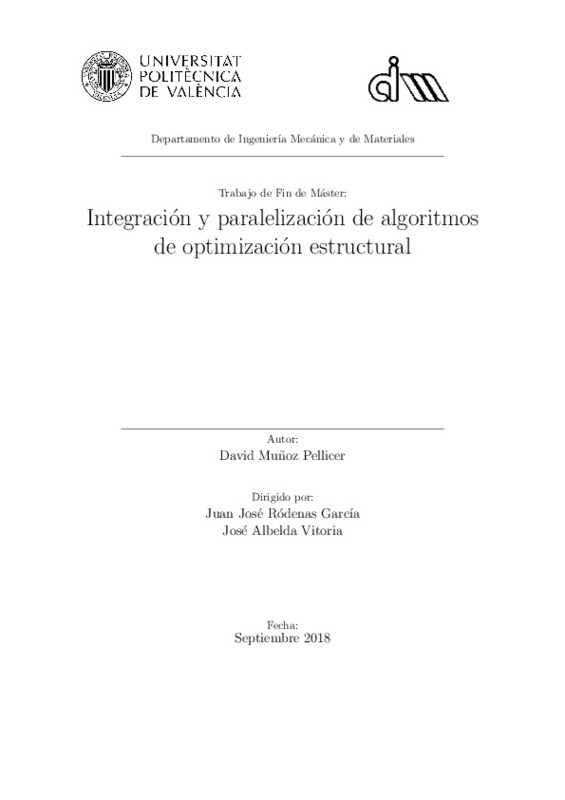|
Los procesos de optimización estructural involucran un coste computacional muy elevado y en muchas ocasiones la realización de varias optimizaciones de forma secuencial (primero una optimización topológica para definir la ...[+]
Los procesos de optimización estructural involucran un coste computacional muy elevado y en muchas ocasiones la realización de varias optimizaciones de forma secuencial (primero una optimización topológica para definir la parametrización adecuada del problema y una optimización de forma posterior para definir completamente el componente mecánico). Para realizar estas tareas suelen utilizarse diferentes herramientas computacionales que se han desarrollado en diferentes momentos y plataformas. Esto justifica el desarrollo de un entorno de trabajo que permita integrar estas herramientas y facilite la transferencia de información entre ellas. En lo referente a la solución del problema asociado al alto coste computacional en el entorno de trabajo se quiere introducir, tanto los modelos subrogados desarrollados previamente en el departamento, como nuevas herramientas que permitan distribuir en paralelo ciertas tareas de cálculo entre diferentes ordenadores. Esto supondría poder abordar en un tiempo razonable problemas de optimización estructural que actualmente no se pueden resolver con una única máquina. El trabajo propuesto consistirá en el desarrollo de dicho entorno integrado de optimización, que permita definir y controlar secuencias complejas de optimización, y que incluya las herramientas computacionales disponibles para reducir el coste computacional y herramientas de paralelización adaptadas al \textit{hardware} disponible en el Departamento de Ingeniería Mecánica.
[-]
The structural optimization processes involve high computational costs and, in many situations, the accomplishment of several sequential shape optimizations (first a topological optimization to define the layout of the ...[+]
The structural optimization processes involve high computational costs and, in many situations, the accomplishment of several sequential shape optimizations (first a topological optimization to define the layout of the problem and then a shape optimization to define completely the contour of the mechanical component). In order to carry out this task, different computational tools are used. Those tools were developed in different times and platforms. This is why the implementation of a work environment that allows to integrate those tools and eases the transfer of information between them is needed. In reference to the problem's solution, its highl demand of computational cost would be reduced through the introduction of surrogate models and new tools that allow to distribute in parallel certain tasks to several computers. This would make it possible to solve, in a reasonable time, structural optimization problems that are nowadays impossible to be solved in just one computer. The work proposed will consist in the development of this optimization integrated environment, that allows to define and control complex sequences of optimization, and to include the computational tools available to reduce the computational cost and parallelization tools adapted to the hardware available at the Department of Mechanical Engineering.
[-]
|







